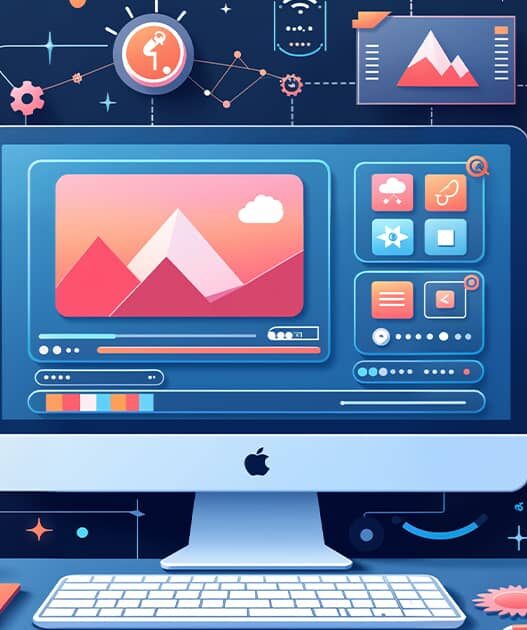Introduction
Cloud gaming has rapidly evolved, transforming the way we play video games. Instead of relying on expensive hardware like gaming consoles or high-end PCs, cloud gaming allows users to stream games directly from the cloud to their devices, making gaming more accessible than ever. As internet speeds and cloud infrastructure improve, the future of cloud gaming promises to be more immersive and flexible.
In this article, we’ll explore the current state of cloud gaming, its future potential, and how it will revolutionize the gaming industry.
What Is Cloud Gaming?
Cloud gaming, also known as game streaming, allows users to play video games over the internet without needing to download the game or use powerful hardware. Games are hosted on remote servers, and the gameplay is streamed to your device, much like how movies are streamed on platforms like Netflix. Cloud gaming services manage all the heavy processing, while users only need a stable internet connection to enjoy their favorite games.
- Key Benefits:
- No need for expensive gaming hardware.
- Instant access to a vast library of games.
- Play anywhere, on any device with a compatible screen.
The Current State of Cloud Gaming
1. Major Cloud Gaming Platforms
Several major platforms are leading the charge in the cloud gaming space, each offering unique features and game libraries. The current industry leaders include:
- Google Stadia: Stadia allows users to stream games directly to their browser, mobile device, or TV, with performance comparable to traditional gaming consoles.
- Microsoft xCloud: Integrated with Xbox Game Pass, xCloud allows gamers to stream hundreds of Xbox games to their mobile devices or PCs without owning an Xbox console.
- NVIDIA GeForce NOW: GeForce NOW lets users stream games they already own from services like Steam, Epic Games, and Uplay, using NVIDIA’s powerful cloud infrastructure.
- Amazon Luna: Luna is Amazon’s cloud gaming service, integrated with Twitch for a seamless gaming and streaming experience. It offers game channels with various titles available for streaming.
2. The Role of 5G in Cloud Gaming
The rollout of 5G technology is expected to be a game-changer for cloud gaming. With its significantly faster speeds, lower latency, and increased bandwidth, 5G will enable smoother and more responsive gaming experiences, even on mobile devices. This will make high-end gaming on smartphones and tablets possible, without the need for Wi-Fi or a physical console.
How Cloud Gaming Works
Cloud gaming operates on the principle of remote servers doing all the heavy processing for the games. These servers run the game, process the inputs from the player (e.g., keyboard or controller commands), and stream the output back to the player’s device in real time.
- Key Components:
- Data Centers: Massive data centers house the servers that run the games. These data centers are strategically placed worldwide to minimize latency for gamers in different regions.
- Streaming Technology: Like video streaming services, cloud gaming platforms use advanced video compression to deliver smooth gameplay streams.
- Input and Latency: Cloud gaming requires low latency to ensure that when a player presses a button, the action happens quickly on-screen. Technologies like 5G, high-speed fiber internet, and edge computing help reduce latency.
The Benefits of Cloud Gaming
1. No Need for Expensive Hardware
One of the biggest advantages of cloud gaming is that players don’t need to buy expensive gaming consoles or high-end PCs. All they need is a stable internet connection and a device with a screen, such as a smartphone, tablet, or TV. This makes gaming more affordable and accessible, especially for casual gamers who don’t want to invest in expensive hardware.
- Example: Instead of spending hundreds or thousands of dollars on a gaming PC, users can stream AAA games on a basic laptop or smartphone using cloud gaming services like NVIDIA GeForce NOW.
2. Instant Game Access
With cloud gaming, users can instantly access a vast library of games without waiting for downloads or updates. Once you click on a game, it starts streaming immediately, eliminating long load times and the need for physical copies or large digital files.
- Example: On Google Stadia, players can start a game within seconds, bypassing the need to install the game on their device.
3. Play Anywhere, Anytime
Cloud gaming allows users to play on a variety of devices, whether at home on a TV, on the go with a mobile phone, or even on a work laptop during a break. As long as there is an internet connection, games are accessible anytime, anywhere.
- Example: With Microsoft xCloud, you can start a game on your Xbox at home, continue playing it on your mobile phone while traveling, and finish it on your PC.
Challenges Facing Cloud Gaming
1. Internet Speed and Latency
While cloud gaming eliminates the need for powerful hardware, it requires a fast and stable internet connection. Players in regions with slow or unreliable internet may experience high latency, buffering, or low-quality graphics, which can diminish the gaming experience.
- Solution: The continued rollout of 5G and improvements in broadband infrastructure will help mitigate this issue, offering faster, more reliable internet connections for cloud gamers.
2. Data Caps
Streaming games consumes a significant amount of data, similar to streaming high-definition video. For users with limited data plans, cloud gaming could quickly exceed their monthly data caps, leading to extra charges or throttled speeds.
- Solution: Gamers can monitor their data usage or opt for internet plans with higher data allowances to support their cloud gaming habits.
3. Game Ownership and Control
Unlike traditional gaming, where users own physical or digital copies of the games, cloud gaming relies on streaming licenses. This raises questions about game ownership, as players don’t technically own the games they stream, and access to certain titles could be removed if licensing agreements change.
- Solution: Players should be aware that cloud gaming is more like renting a service than owning a product. Choosing services that allow users to stream games they already own, like GeForce NOW, may help mitigate this concern.
The Future of Cloud Gaming
1. Integration with Other Technologies
As cloud gaming matures, we can expect deeper integration with other emerging technologies like virtual reality (VR), augmented reality (AR), and AI. This will create more immersive gaming experiences that leverage the power of the cloud to generate high-quality graphics and interactive environments.
- Example: Future cloud gaming platforms may allow users to stream VR games without needing an expensive gaming PC, using just a headset and an internet connection.
2. Expansion of Game Libraries
As cloud gaming platforms grow, we will likely see the expansion of game libraries, including older classics, indie games, and new AAA releases. With cloud gaming, developers can offer their games to a global audience without worrying about hardware limitations, making games more accessible to players worldwide.
- Example: Microsoft Game Pass Ultimate offers over 100 games for streaming, with new titles added regularly, providing a diverse range of gaming options.
3. More Affordable Gaming Subscriptions
Cloud gaming could lead to more subscription-based gaming services, offering gamers a Netflix-like experience for video games. Instead of purchasing individual titles, players can pay a monthly fee to access a wide variety of games, similar to services like Xbox Game Pass or PlayStation Now.
- Example: Amazon Luna offers a subscription model where players can pay a flat fee to access a library of games, with additional channels available for specific genres or publishers.
Conclusion
Cloud gaming is set to revolutionize the gaming industry, making high-quality games more accessible to a broader audience. With no need for expensive hardware, instant game access, and the flexibility to play anywhere, the future of cloud gaming looks promising. As internet speeds improve and platforms continue to evolve, cloud gaming will likely become the go-to solution for gamers of all levels. However, challenges such as internet reliability, data caps, and questions of game ownership will need to be addressed to ensure its long-term success.
Featured Image Description:
An illustration of various devices (smartphone, TV, tablet, and PC) connected to the cloud, with a high-end game streaming in real-time. The background could show data streams and network icons, highlighting the role of cloud technology in the future of gaming.

















